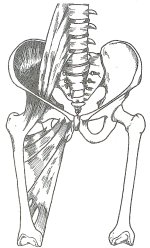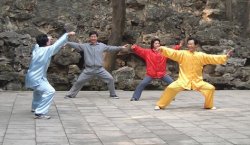The easiest way to rob your opponent of their power is to break their connection with the ground. Thus uprooted, Newton’s Third Law compromises their ability to generate penetrating force, and reduces any continued aggression from a potentially deadly threat to a mere nuisance.
The complementary skill—the ability to keep your footing amidst incoming force—is known in Chinese martial arts as rooting.
Typical demonstrations of rooting skill consist of a wushu master in a static posture, with a pack of disciples pushing and pulling to no avail. These shows are impressive, but often fail to highlight the most important characteristic of the skill:




